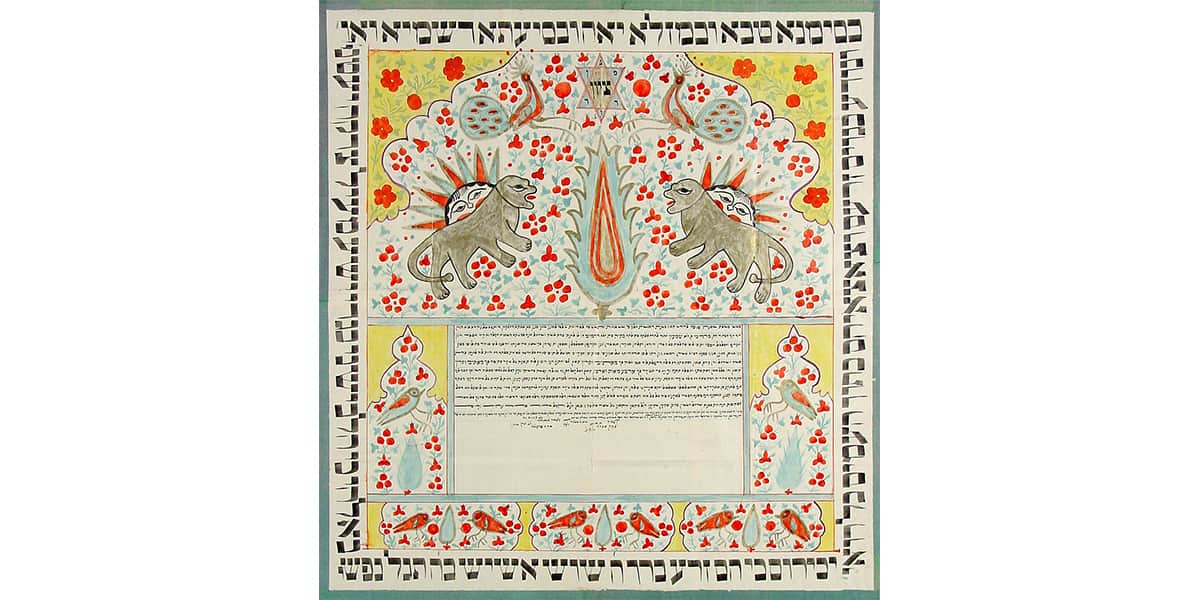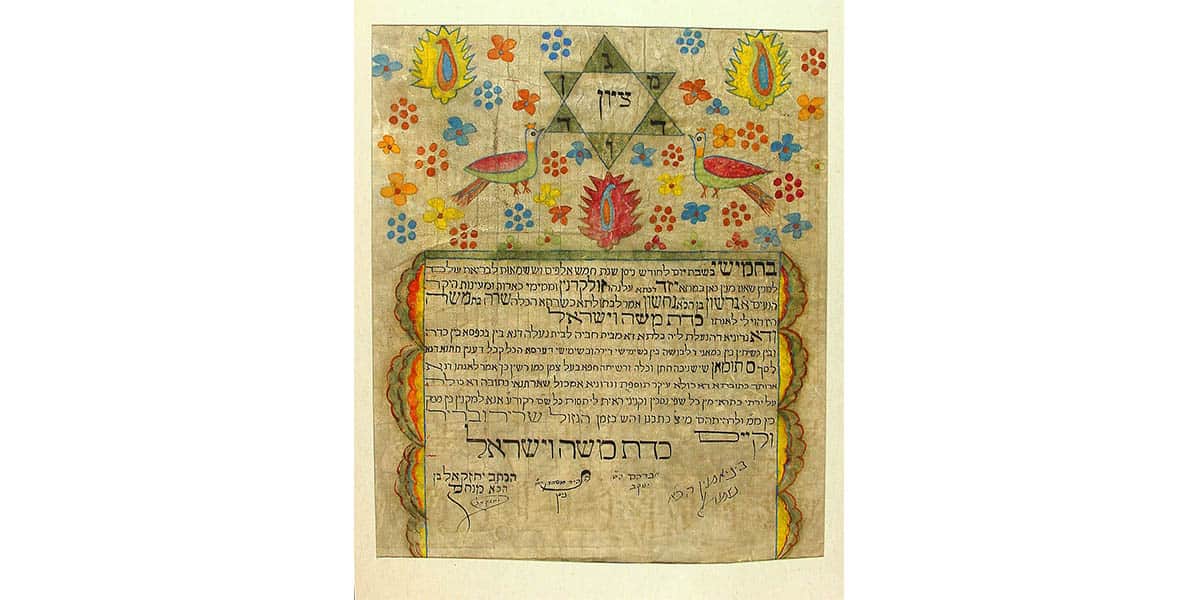The Museum of Jewish Heritage – A Living Memorial to the Holocaust maintains a collection of almost 40,000 artifacts, photographs, documentary films, and survivor testimonies. Though much of our Permanent Collection documents Jewish life in Europe before and during the Holocaust, the breadth of Jewish history outside of Europe is also represented.
Among the Mizrahi Judaica objects in our Permanent Collection are several Persian ketubot donated in 2002 by Daniel M. Friedenberg. [Editor’s note: Persia changed its name to Iran in 1935; the ketubot in our Permanent Collection are from before that year.] An expert in Judaica, Friedenberg served as part-time Curator of Coins and Medals at the Jewish Museum in New York City from 1962 to 1982. The ketubot were among many objects he donated to the Museum of Jewish Heritage, including artifacts from his own family history and Judaica from around the world.
A ketubah, or marriage contract, is an ancient Jewish tradition. The oldest surviving ketubah, found in Egypt, dates from circa 440 B.C.E. and is written on papyrus. The earliest ketubot were legal binding documents listing a husband’s obligations to his wife and providing protections for her in the event of divorce or his death. As economic conditions and gender roles changed over time, so too did the purpose of the ketubah – but the text that was first formalized in the 1st century B.C.E. and used in traditional ketubot today has remained remarkably similar.
Iran is home to one of the oldest Jewish communities in the world; Jews have lived there since before the advent of Islam. Persian Jews faced persecutions, pogroms, and forced conversion to Islam prior to the secular reigns of Reza Shah and his son Muhammad Reza Shah, when they were afforded citizenship and more educational and economic opportunities – but this changed in the 1979 Iranian Revolution. The Jewish community in Iran, numbering about 100,000 strong, was decimated as Jews fled or were exiled or executed. Today, only a small Jewish community exists in Iran – but its existence, in a vehemently anti-Israel country, is yet another layer in the fascinating history of Jews in Iran.
Many objects in the Museum’s Permanent Collection were donated by the original owners or by their descendants. With their help, the Museum becomes the repository of a family’s story in addition to their physical artifacts. In the case of other artifacts, like these Persian ketubot donated by Friedenberg, the Museum collects objects out of a belief in their intrinsic value and the importance of their preservation.
See details of some of the Persian ketubot in the slideshow below.





